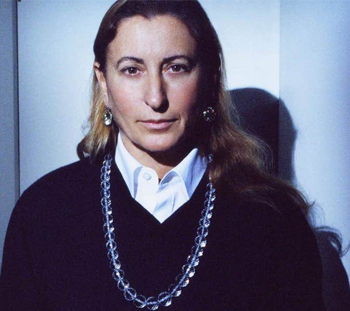
Prada
In 1971 Miuccia Prada entered the family business. Twenty years later, the highly traditional leather goods company had changed beyond all recognition. The innovation of something as simple as a nylon bag meant there was no looking back: Prada was on the way to redefining luxury, subtlety and desirability in fashion.
Prada the company – led by the designer and her husband, Patrizio Bertelli, who started work with Prada in 1977 and is now CEO of the Prada Group – seem to have an uncanny ability to capture the cultural climate in fashion. This sensitivity has been unashamedly teamed with commercial savvy, which has made the brand’s influence over the past decade vast and its growth enormous. From bags and shoes to the first womenswear collection (1988), the Miu Miu line for the younger customer (1993), menswear (1994), Prada Sport (1997) and Prada Beauty (2000), all are directly overseen by Miuccia Prada herself.
Yet, unlike many other Leviathan brands, there is something both unconventional and idiosyncratic in Miuccia Prada’s aesthetic. Much of this may be down to her contradictory character.
Born in Milan in 1950, Miuccia Prada studied political science at the city’s university and was a member of Italy’s Communist Party, yet is said to have worn Yves Saint Laurent on the barricades. The designer, who has made the Wall Street Journal’s ’30 Most Powerful Women In Europe’ list, also spent a period studying to be a mime artist. These dualities have led to her expert ability in balancing the contrary forces of art and commerce within the super-brand, sometimes quite literally: Prada has its own art foundation and has collaborated with the architect Rem Koolhaas on stores in New York (2001) and Los Angeles (2004).
From the late ’90s, the Prada Group embarked upon a policy of rapid expansion, purchasing brands including Azzedine Alaia, Helmut Lang and Church & Co.